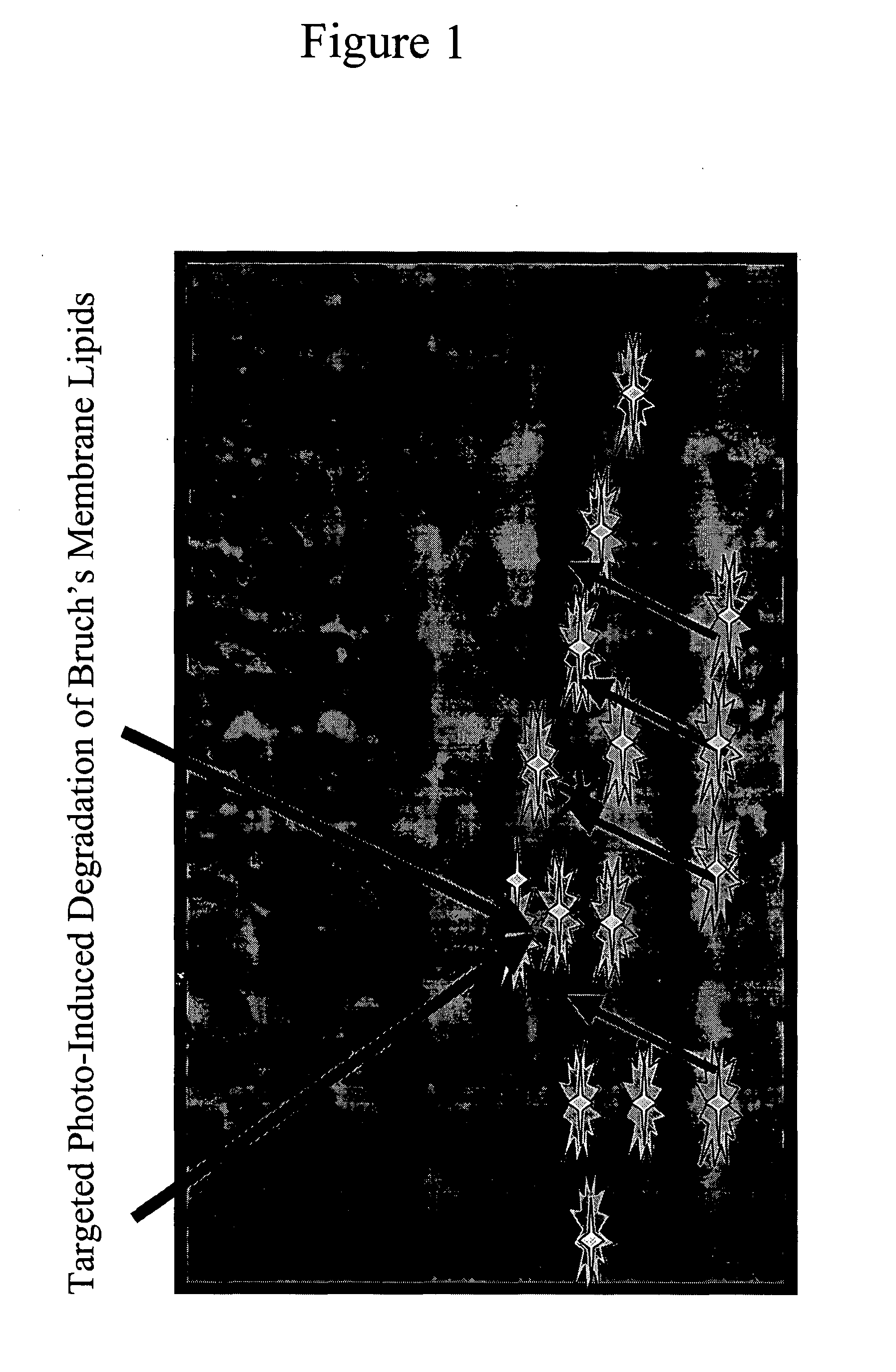Treatment for eye disorder
a technology for eye disorders and treatment, applied in the field of ophthalmology and cell biology, can solve the problems of neovascular tissue growth through, 's membrane, serous fluid leakage, etc., and achieve the effect of enhancing diffusion
- Summary
- Abstract
- Description
- Claims
- Application Information
AI Technical Summary
Benefits of technology
Problems solved by technology
Method used
Image
Examples
example 1
Caged Tissue-Altering Molecules
[0078] Caged tissue-altering enzymes are constructed by masking various amino acid sidechains within the protein using photo-removable protecting groups. Examples of such groups are the o-nitrobenzyl, desyl, phenacyl, trans-o-cinnamoyl, coumarinyl, quinoline-2-only, xanthenyl, thioxanthenyl, selenoxanthenyl and anthracenyl, stilbenyl and derivatives thereof. These groups are introduced into the proteins by total chemical synthesis (including native chemical ligation), nonsense suppression methods, or post-translational modification. Based on the known matrix components of Bruch's membrane, cholesterol esterases, lipases, matrix metalloproteinases degrade portions of Bruch's membrane and improve trans-membrane diffusion. “Caging” these enzymes inactivates them. Thus, following systemic administration they circulate, bind to tissues and then are eliminated in their inactive form. Application of precisely focused light energy to Bruch's membrane (2-photo...
example 2
Alternative Inactivation Embodiments
[0080] Degradative enzymes (matrix metalloproteinases, cholesterol esterases, lipases, serine proteases) can also be incorporated into ultrasound contrast agents such as microbubbles and liposomes. Carried within these contrast agents, the degradative molecules are inactive. Precise application of ultrasonic energy to Bruch's membrane causes cavitations of the contrast agent and release of the degradative enzymes into Bruch's membrane. Similar to the example above, enzymatic release improves trans-membrane diffusion and potentially improves visual function. Not activated by ultrasound, remaining extraocular encapsulated inactive enzymes are eliminated from the body without causing collateral tissue alterations.
example 3
Targeting Improvements
[0081] Many of the enzymes administered in the previous examples are all present in Bruch's membrane and / or the RPE. Further, they are present in the circulation. To increase the local concentration of these enzymes within Bruch's membrane, these enzymes may be fused to various protein binding domains, such as a leucine zipper domain, a chitin-binding domain, or a Src homology 2 (SH2) domain. A skilled artisan recognizes that hetero-dimeric zippers consist of an acidic and a basic partner and may self assemble into coiled-coils that exist as dimers and higher order aggregates. Thus, in some embodiments, an acidic (basic) leucine zipper domain may be selectively delivered to Bruch's membrane via photo-crosslinking initiated by 2-photon irradiation. In specific embodiments, the enzyme is fused to a basic (acidic) leucine zipper domain and is administered, for example, systemically (such as orally or intravenously), or by injection (such as intraocular and / or per...
PUM
| Property | Measurement | Unit |
|---|---|---|
| Thickness | aaaaa | aaaaa |
| Composition | aaaaa | aaaaa |
| Energy | aaaaa | aaaaa |
Abstract
Description
Claims
Application Information
 Login to View More
Login to View More - R&D
- Intellectual Property
- Life Sciences
- Materials
- Tech Scout
- Unparalleled Data Quality
- Higher Quality Content
- 60% Fewer Hallucinations
Browse by: Latest US Patents, China's latest patents, Technical Efficacy Thesaurus, Application Domain, Technology Topic, Popular Technical Reports.
© 2025 PatSnap. All rights reserved.Legal|Privacy policy|Modern Slavery Act Transparency Statement|Sitemap|About US| Contact US: help@patsnap.com

